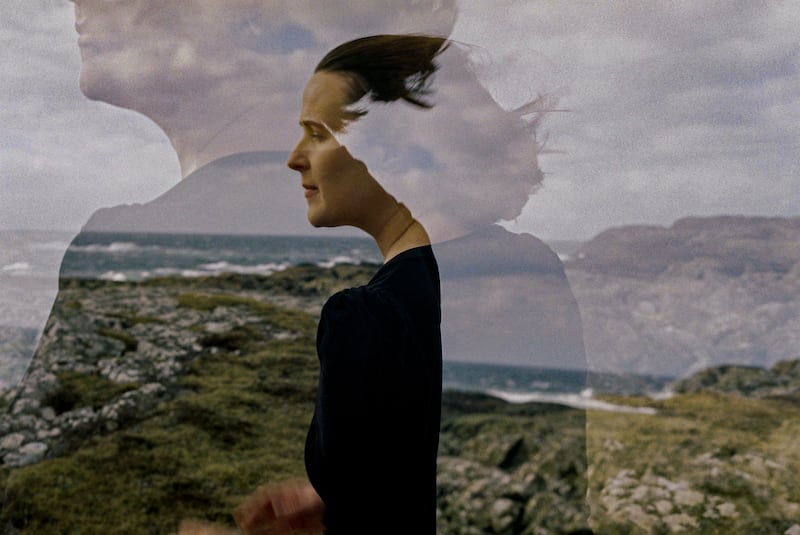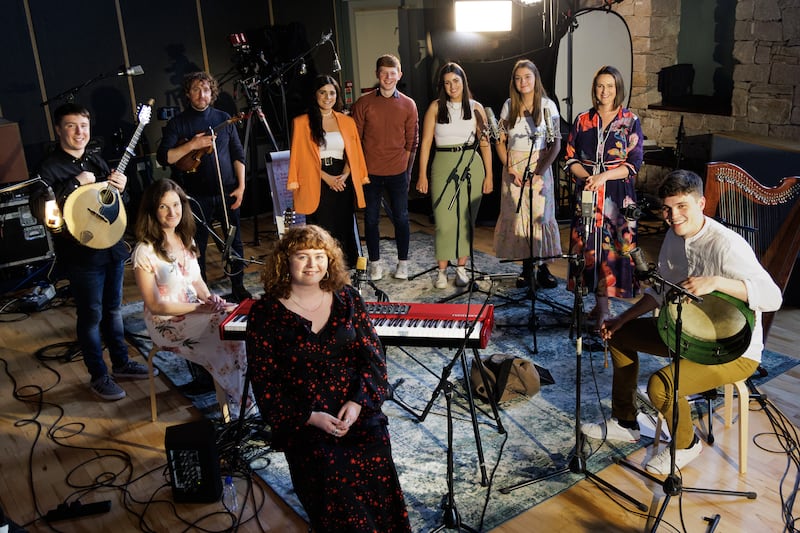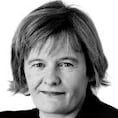The porous boundaries between the creative and academic worlds are a source of great delight to Síle Denvir. The sean-nós singer and harpist has just released her new album, Anamnesis, and tomorrow a new series, Bláth na hÓige, will begin on TG4, steered by Denvir as its music director. She’s embarking on what promises to be a busy year, as she has also been announced as TG4 Gradam Ceoil traditional singer of the year for 2023.
“They say that good things come in threes,” Denvir says with a broad smile, “and all of these have come at the same time, even though it’s work that’s been going on for years and years. I see them as being very connected and with my academic work as well.”
Even in terms of how media connects with academia now and connects with creativity, I think that’s how music and art are going to be
— Síle Denvir
Denvir is a woman of many parts. Alongside her many artistic projects, she teaches at Dublin City University, where she focuses on Irish-language songs and poetry. And just as Mícheál Ó Súilleabháin and Seán Ó Riada stitched their creative endeavours through their academic work before her, Denvir relishes the yin and yang that unite her own projects in the recording studio, in the field and in academia. For her, they are all of a piece.
“That’s how I contextualise these things,” she says, with an infectious enthusiasm for her plate spinning. “Even in terms of how media connects with academia now and connects with creativity, I think that’s how music and art are going to be, going forward. I see that as a positive. I never see any kind of modernity as a negative. You have to embrace it. The world changes and we’ve always had concerns that go back to O’Carolan’s days when Denis Hempson was saying that his tunes were far too modern and far too European.”
Irish Tesla owners on Musk’s EV company: ‘I’m either stuck with it, or I have to take a big financial hit’
‘Our daughter is almost 40 and moving out soon, but she has told her son that he can stay with us’
‘I grew up in an apartment in another country. I bought an apartment in Dublin and had to get out after a year’
For Bláth na hÓige, Denvir and the fiddle player Colm Mac Con Iomaire steer an intriguing course with eight young sean-nós singers, exploring the sense of place that grounds their singing, as well as teasing out the harmonic potential in songs that had traditionally been sung solo.
“Their musical experiences are quite similar,” Denvir says, reflecting on the contributions of the singers, just one of whom, Piaras Ó Lorcáin, is from a non-Gaeltacht area; in his case Crossmaglen, in Co Armagh.
“I’m interested in musical transmission and how people learn their songs,” says Denvir. “If you read any book about sean-nós singing you read of how you learn it by the fireside and you learn it from your family and neighbours. That’s how it would have functioned in a traditional society.
“But in the 1970s and 1980s it became very obvious that things were changing, and different singers in different communities created different things that contributed to that learning cycle, like Scoil na Crannóige, in Donegal, and the schools themselves. So there’s a formalisation to these singers’ learning, but it’s still a very rich and enriching experience, which they all talk about: how their got their songs, both in place and out of place.”
Watching Bláth na hÓige, it’s abundantly clear that all eight featured singers have an indelible sense of place underpinning their music. Denvir sees this as key to the rude state in which sean-nós singing finds itself today.
“They all know what they have, and they understand the responsibility that comes with that as well,” she says. “They have a very strong sense of preserving, creating and handing on the songs, so they are aware of their place within it all. Linguistically, being brought up in the Gaeltacht is an extraordinary gift to have, and their experience of place is also very coloured by that. And they’re not worried about its future. There’s an assumption on their part that it will live on, which is very refreshing, and maybe they’ve thrown off some of the heaviness that we might have carried with tradition and the language in the past.”

Ó Lorcáin’s contribution also brings the value of collecting and archiving songs into sharp relief. “Piaras is really interesting,” Denvir says. “He would have learned his songs from Bláithín Nic Cána, who would have learned from Páidrigín Ní Uallacháin. So he’s from a stronghold of poetry, song and culture going back and beyond the 17th and 18th century. So he comes from a ceanntar Gaelacha,” she says, referring to an area that is rich in Irish culture but not native Irish-speaking. “His experience is a great reminder that every part of the country has pockets of song, and it’s really important to open it up so that there is something here for us all.”
You can almost touch Ó Lorcáin’s singer’s sense of place as he sings Seán Gabha on Bláth na hÓige. “That song was collected just a few miles from his house,” Denvir says. “It was collected by Páidrigín Ní Uallacháin, and without her great work a lot of these songs would have been lost. So to see Piaras flourishing among all these singers from the Gaeltacht, singing songs that Páidrigín preserved, was fantastic. So he has absolute ownership of that song and absolute authority or permission to be creative with it.”
Many of the singers on Bláth na hÓige knew one another through social media but hadn’t met in person before encountering one another at Stiúideo Cuan, in Spiddal, where the programme is filmed.
“The young singers are central to the entire series,” Denvir says. “Their voices – and not just their musical voices; their own intelligence, their thought processes, how they see themselves within this whole wider tradition – I think it’s really important to let that be heard. Because we don’t often go to younger people for information, particularly now when things have changed so much in transmission, and how they learn. Even their reasons for singing these songs.

“I introduced Caoimhe and Seamus Ó Flatharta to Máire Ní Churraoin, because I felt there was something there around harmonies. I’ve always been taken by harmony singing, and one of the things you always hear about Connemara sean-nós is that it’s unaccompanied and it doesn’t suit harmony, but it was really lovely to talk to them about their own obsession with harmony. And then Máire talking about driving along, listening to [the sean-nós singer] Darach Ó Catháin and singing in harmony. These are all the things that I do too.”
Denvir’s television work segues seamlessly into her recording project. Anamnesis, her new album, which was produced by John Reynolds, features a swathe of gorgeously arranged sean-nós songs, many of them united by the theme of unrequited love.
“Plato was the one who came up with the original concept,” she says, explaining the album title. Anamnesis is “a Greek word, and the idea is that all learning is something that is innate in us already and is something that is constantly recurring and being reborn.
“Fionntán de Brún,” the Maynooth University academic, “writes about it in his recent book, Revivalism and Modern Irish Literature: The Anxiety of Transmission and the Dynamics of Renewal. He says that it’s a memory that we hazily retain. As someone who’s grown up in the Gaeltacht and learned these songs since I was four, I’ve always been fascinated by how it just keeps reviving itself and how it’s such a part of who we all are. And I feel that there’s something in these songs that we don’t understand – and that we don’t need to understand, linguistically or musically.”
Denvir is still reeling at the news of her 2023 Gradam Ceoil Traditional Singer of the Year award.
“Overwhelmed is the only word for it,” she says with a wide smile. “I would never have expected in a million years to get a Gradam. I’m looking forward to the night, because I’ve been there many times in the audience, and it’s a lovely celebration.”
Bláth na hÓige begins on TG4 on Thursday, April 13th, at 8pm



















